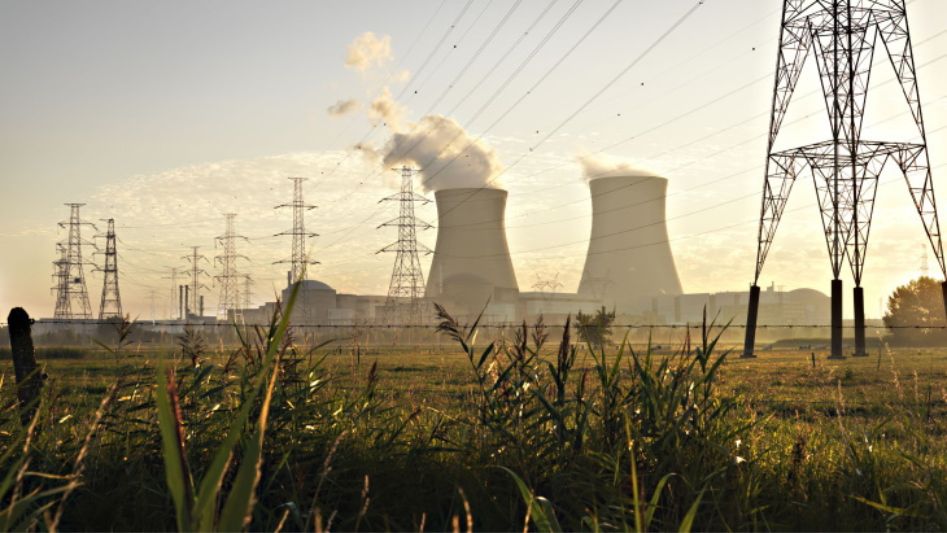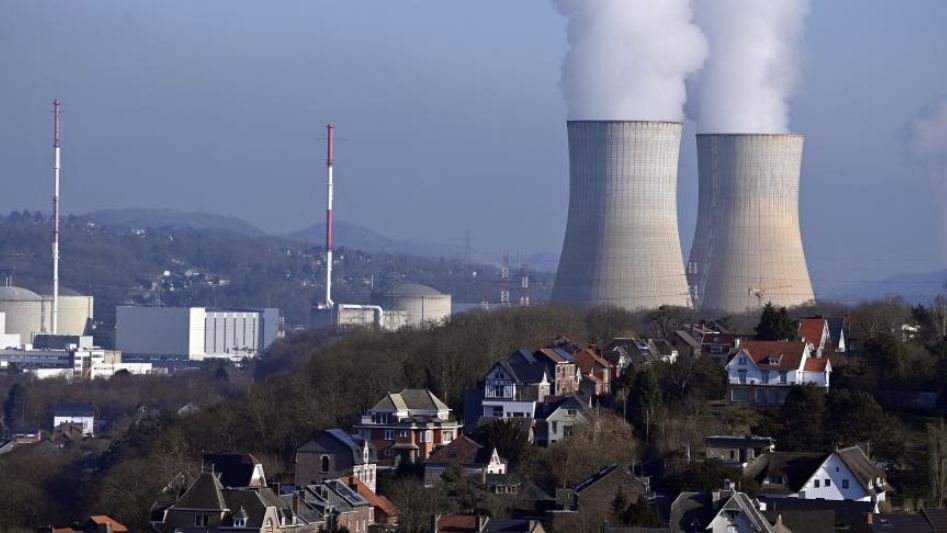Fossil fuels are the dirtiest and most dangerous energy sources. Nuclear power and modern renewable energy sources are much safer and cleaner.
Table Of Content
- Introduction
- Nuclear and renewables are far, far safer than fossil fuels
- Putting energy-related death rates into context
- The safest energy sources are also the cleanest
- Methodology and notes
- Conclusion
- FAQ
- You May Also Like
- External Links
The development of society over the last several centuries has been inextricably linked to the availability of reliable and affordable energy sources. Energy is crucial to practically every significant crisis and opportunity the world has today, as the United Nations puts it.
Energy has enormous positive effects on our lives, but it is not without costs. There are three ways in which energy production may damage people and the planet.
The first is poor air quality, which causes early death for millions of people annually. Most of these fatalities may be attributed to the use of fossil fuels and the burning of biomass such as wood, dung, and charcoal.

Mishaps also rank second. Coal, uranium, rare metals, oil, and gas all have the potential to cause accidents during mining and extraction. It also covers incidents that occur during the transportation of raw materials and infrastructure, the building of the power plant, or the maintenance of the power plant itself.
Third, emissions of greenhouse gases are the principal cause of climate change and are mostly produced by the combustion of fossil fuels. In 2020, fossil fuels and industrial processes will account for 91% of all manmade CO2 emissions.
There is no risk-free source of energy production. Short-term, they all contribute to poor air quality and accidental injuries. All of these factors have long-term implications for climate change.
Both are important, but their roles are quite different in each. Greenhouse gases are released at the highest rates per unit of energy produced, and fossil fuels are the dirtiest and most harmful option in the near term. Low-carbon energy sources are also the safest, so there aren’t any compromises to be made there. From the standpoints of human health and climate change, whether we switch to nuclear power or renewable energy is less important than ending our reliance on fossil fuels.
Nuclear and renewables are far, far safer than fossil fuels
Let’s compare the immediate dangers posed by each of these climate change sources before we worry about their cumulative effects.
It would be unfair to draw these comparisons based just on the number of fatalities caused by each energy source; fossil fuels continue to play a significant role in the world’s electrical mix, therefore it stands to reason that they would cause more deaths overall.
Instead, we look at how many people are predicted to be killed by each one for every kilowatt-hour of power they produce. Terawatt-hours is the unit of measurement for this. The annual energy consumption of 150,000 European Union residents is roughly equivalent to 1 terawatt-hour.
Deaths from supply chain accidents and air pollution are included in this total.
Let’s check out the table and see how these two items compare. Many more lives are lost with every unit of power generated by fossil fuels and biomass than by nuclear and contemporary renewables. By a long shot, the dirtiest is coal.
These projections for fossil fuels are likely to be somewhat cautious, even if they are accurate. Although they use older models of the health effects of air pollution, they are based on power plants in Europe, which have strong pollution controls. As I elaborate on in the article’s conclusion, the latest studies on air pollution suggest that the already high mortality toll from fossil fuels might get considerably higher.
Both the Chernobyl disaster in the Ukraine in 1986 and the Fukushima disaster in Japan in 2011 have had significant impacts on how we see the safety of nuclear energy. The events that took place were sad. The ultimate death counts were very modest, however, when compared to the millions of people killed annually by fossil fuels. I’ve used a death toll of 433 for Chernobyl and 2,314 for Fukushima in my calculations. In a connected piece, I examine the exact number of fatalities caused by each accident, should you be so inclined.
Hydropower is the other major contributor, although it is also very susceptible to a small number of catastrophic events. Since 1965, its mortality rate has averaged 1.3 per TWh. The Banqiao Dam failure in China in 1975 accounts for almost all of this rate. About 171,000 individuals lost their lives because of it. However, the mortality toll from hydropower was quite low, at about 0.04 fatalities per TWh, putting it on par with other renewable energy sources like solar and wind.
Solar and wind power have finally arrived. These two causes of mortality are quite minor, yet they are not negligible. Occasionally, individuals are killed in supply chain mishaps, such as when a helicopter crashes into a turbine, a fire breaks out while installing turbines or panels, or someone drowns at an offshore wind site.
Many people only see the little differences between nuclear, solar, and wind power near the bottom of the figure. The uncertainty around these numbers makes it unlikely that they won’t overlap, making this comparison inaccurate.
The most important takeaway is that they are all much safer alternatives to fossil fuels.
For instance, compared to brown coal, coal, oil, and gas, nuclear energy causes 99.9 percent fewer fatalities. There is no difference in security between solar and wind power.

Putting energy-related death rates into context
Deaths per terawatt-hour is an unusual metric to consider. Okay, let’s attempt to put this into context.
Let’s look at how many fatalities each would cause in a typical European Union town of 150,000 people, which uses one terawatt-hour of power annually (as I’ve said previously). Let’s dub this place “Euroville,” shall we?
We estimate that at least 25 premature deaths would occur annually if all energy needs in Euroville were met by coal. Death by air pollution would be imminent for the vast majority of these individuals.
See how coal-powered Euroville stacks up against all-electric and renewable energy communities here.
- Coal: Twenty-five lives would be lost each and every year;
- Oil: Annually, 18 lives would be cut short.
- Gas: Premature death would occur at a rate of three people per year.
- Hydropower: One person would perish per year on average;
- Wind: In a typical year, death rates would be zero. Every 25 years, one person would die at a mortality rate of 0.04 deaths per terawatt-hour.
- Nuclear: Only once every 33 years would someone die, but in a typical year, there would be zero deaths.
- Solar: Normally, 50 years would pass without a single death occurring.
The safest energy sources are also the cleanest
Fortunately, the cleanest sources of energy now don’t have to sacrifice their impact on the environment tomorrow. The following table clearly demonstrates their identities.
The identical comparison of deaths due to accidents and air pollution that we just saw may be seen on the left side of the chart. On the right is the quantity of carbon dioxide equivalents released for every kilowatt-hour of generated power.
Emissions from a power plant’s lifespan include not just those from burning fuels but also those from their extraction, transportation, and maintenance.
Coal is once again the most polluting fuel option. Hundreds of times more than nuclear, solar, and wind power, it is the largest contributor to global warming.
Coal is the worst, but oil and gas are both worse than nuclear and renewables.
Regrettably, fossil fuels such as coal, oil, and gas still make up over 60% of the worldwide electrical mix. We have a golden chance to halt climate change by shifting away from fossil fuels and toward nuclear and renewable energy sources, which will also have the added benefit of reducing fatalities caused by accidents and air pollution.
This transformation will have enormous health benefits for both the current and future generations.
Methodology and notes
The accompanying graphic certainly understates the true magnitude of the global average mortality rate attributable to fossil fuels.
In this article, we compare deaths caused by coal, oil, and gas using data from a 2007 report by Anil Markandya and Paul Wilkinson published in the medical journal The Lancet. For the time being, these are the most reputable sources I was able to uncover on mortality rates associated with these factors. These costs are derived from European electrical generation data.
There are three main reasons why I believe these mortality rates to be much lower than the actual worldwide average.
Throughout Europe, emission restrictions at fossil fuel facilities are among the most stringent in the world. Pollution from European power plants is lower than that of the world as a whole and much lower than that from plants in several low- and middle-income nations. The result is that pollution produced per kilowatt-hour of power is likely to be higher in certain regions than in others.
As a result, more people in those nations will be forced to move into areas with higher concentrations of power plants, increasing their exposure to harmful emissions. A higher death toll per TWh will be seen in the nation whose power plants are located closer to urban centers and cities, even if both countries generate the same amount of coal power and both have the same pollution controls. This is due to the fact that an increased number of individuals would be exposed to polluted air.
As Markandya and Wilkinson discovered in Europe, power plants in many developing nations are situated closer to cities than in the European Union, so we may anticipate a larger death toll there (2007).
New studies on the effects of air pollution on human health show that they may be far more severe than previously thought. Markandya and Wilkinson released their study back in 2007. The health effects of air pollution have been studied extensively since then. New studies have shown even more dire consequences for human health. Max Roser, a colleague of mine, provides a review of the literature that demonstrates this development in our understanding of the mortality rates associated with air pollution.
Further supporting the idea that global average rates are much higher is the fact that estimates of total global deaths from fossil fuel electricity obtained by multiplying the death rates from Markandya and Wilkinson (2007) by global electricity production are much lower than the most recent research.
A total of 280,000 lives will be lost in 2021 if the death tolls from coal, oil, and gas are multiplied by their respective global power outputs, according to Markandya and Wilkinson (2007).
This is far less than what has been predicted by more recent studies. Leliveld et al. (2018), for instance, predict that 3.6 million people lose their lives due to the use of fossil fuels. This number is twice what Vohra et al. (2021) predict: 8.7 million.
These fatalities from fossil fuel air pollution are not always linked to the generation of electricity. However, the number of fatalities may be estimated. Estimates for the distribution of mortality attributable to air pollution were made by Leliveld and coworkers in a recent publication. According to their calculations, electricity generation is responsible for 12% of all air pollution fatalities (including those caused by fossil fuels and other pollutants).
According to my estimates, the annual death toll from the combustion of fossil fuels in power plants ranges between 1.1 million and 2.55 million.
Markandya and Wilkinson’s (2007) mortality rate estimates are 4–9 times too low. This would imply that the true mortality rates from fossil fuels are likely four-to-nine times greater. That works out to somewhere between 93.2 and 224 deaths per terawatt-hour caused by coal around the world.
However, more recent data on deaths caused by coal, oil, and gas would greatly enhance these figures and are thus unavailable for use here. Estimates of the true number of deaths are needed since the existing figures likely understate the problem.
Accidents in energy supply systems need a real-time worldwide database.
The most recent data we have on nuclear, solar, and wind accidents are the ones we use in our discussion. They aren’t foolproof, and there isn’t a timely dataset that follows these mishaps. This is a significant knowledge gap regarding the security of energy sources and the evolution of this security.
In order to calculate the fatality rate associated with renewable energy technology, Sovacool et al. (2016) assembled a database of energy-related incidents from scholarly and media sources. According to their definition, an accident is “any unintended occurrence or event at an energy plant that resulted in either one fatality (or more) or at least $50,000 in property damage,” which is in line with definitions found in the academic literature.
This prompts various inquiries over the appropriateness of attributing certain accidents to certain energy sources. As an example, this database includes information on fatalities caused by the leakage of water from a solar factory’s water tank during a building test. Whether or not these fatalities in the supply chain may be directly linked to solar energy remains unclear.
As a result, it is difficult to estimate with high accuracy how comparable these accidents are among the various energy systems. To add insult to injury, the database search conducted by Sovacool et al. (2016) was restricted to papers written in English or translated into English. Since this is the case, it’s possible that some of these assessments are somewhat exaggerated or understated. Renewable and nuclear technologies would constantly come up with a considerably lower mortality rate than fossil fuels, so it’s doubtful that their relative positions would alter drastically. These comparisons would be considerably enhanced by consistent data collection and monitoring of occurrences across all energy systems.
Estimates of the risks to human health that come from taking raw materials out of the ground to use in all kinds of energy production need to be updated.
Health effects from radiation exposure during the mining of metals and minerals utilized in supply chains are not accounted for in the data reported in this paper, on which I depend.
We could think that this only affects nuclear energy, but tests have shown that solar, wind, hydropower, coal, and gas are all much more likely to cause cancer than nuclear energy.
This data solely accounts for the possibility of employees being exposed to harmful substances. We have not included their data in the statistics we have cited above since they do not provide us with projections of mortality rates.
The overall findings would not alter, nevertheless, if these numbers were included. Coal in particular is the most carcinogenic of the fossil fuels, and it is more harmful than either nuclear or renewable energy. As a result, the gap between them would widen rather than narrow. The fundamental understanding would remain the same: fossil fuels are dangerous to people, whereas nuclear power and contemporary renewables are relatively risk-free.
We don’t have good estimates of the health burden of rare minerals in energy supply chains yet, which makes it hard to understand the effects of these risks and come up with ways to reduce them.

Conclusion
Negative impacts are associated with all energy sources. The magnitude differences are significant, with fossil fuels being the dirtiest and deadliest, and nuclear and modern renewable energy sources being the safest and cleanest.From the standpoints of human health and climate change, whether we switch to nuclear power or renewable energy is less important than ending our reliance on fossil fuels.
FAQ
Which kind of energy causes the most premature deaths annually?
According to research by Oxford University’s Our World in Data project, coal, which provides roughly 35% of energy globally, is the deadliest power source, causing about 25 fatalities for every terawatt-hour of electricity generated. Over 18 fatalities per terawatt-hour are attributed to oil, making it the second-deadliest source of energy.
Are there any estimates of how many lives have been lost due to nuclear energy?
A mortality rate of 0.04 fatalities per terawatt-hour equates to one death every 25 years in nuclear power: no deaths occur in a typical year, and only one death occurs every 33 years.
Which energy options do you think are the worst?
Carbon emissions from coal are the highest, followed by those from natural gas; those from renewable energy sources like solar and wind power and nuclear power are relatively clean.
You May Also Like
- WHAT IS HYDROPOWER AND HOW DOES IT WORK?
- HOW MUCH SOLAR ENERGY COST? TRENDS OVER TIME
- TOP 3 USES OF ENERGY IN OUR DAILY LIVES
- ENERGY STORAGE IN THE OCEAN: HOW IS THAT EVEN POSSIBLE?
- CO2 DIRECT AIR CAPTURE: PROS AND CONS
External Links
- Mortality rate worldwide in 2012, by energy source
- Number of deaths per terawatt-hour of electricity produced worldwide 2021, by energy source
- What’s the Death Toll of Nuclear vs Other Energy Sources?
- Which power sources are most deadly? Hint — not solar and wind
- How Deadly Is Your Kilowatt? We Rank The Killer Energy Sources
